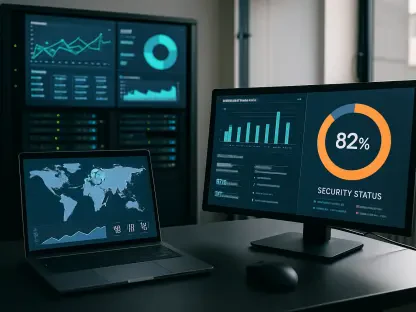In the wake of a recent ransomware attack, Blue Yonder, a renowned software supply chain company, has been thrust into the spotlight as it grapples with claims of a significant data breach. On November 21, the Termite ransomware group, an emerging threat in the cybercrime landscape, asserted responsibility for the attack and alleged possession of a staggering 680GB of Blue Yonder’s data. This bold claim raised alarms across the industry, sparking concerns over the safety and integrity of data managed by Blue Yonder. Security researchers from Arctic Wolf have been monitoring these developments, tracing the origins of the claim to a leak site that has been active since October. Blue Yonder, in response, has mobilized external forensic experts to thoroughly investigate the legitimacy of the group’s assertions and mitigate any potential fallout.
Analyzing Termite Ransomware Tactics
According to researchers at Broadcom, there is still uncertainty about whether Termite ransomware is linked to any pre-existing cybercriminal groups, although it seems to utilize a version of the Babuk ransomware, which has been modified for their purposes. Termite distinguishes itself by employing a double extortion tactic that pressures victims to pay for a decryptor to halt the release of stolen data. This method multiplies the threat level for affected companies, enhancing the urgency of successful mitigation efforts. Adding a layer of complexity, Kroll researchers identified that Termite uses a watering hole attack technique. This involves strategically embedding malicious ad software on websites frequently visited by targeted users. Once the malicious software infects a user’s system, the Red Line Stealer malware is deployed to harvest credentials, followed by launching ransomware within a VMware ESXi environment, showcasing the sophistication of the attack vector.
Impact on Blue Yonder’s Operations
As Blue Yonder’s investigation into the cyberattack progresses, the techniques employed in the assault remain elusive. The company has notified affected clients about the disruptions and is working diligently with them to restore normal operations. Notable companies affected include Morrisons from the U.K. and Starbucks, the global coffeehouse giant. Morrisons experienced issues with its warehouse management system, particularly in processing produce and fresh food, but resumed normal operations by Friday. Starbucks faced disruptions in its employee hour tracking system, causing a temporary switch to manual scheduling.
This incident starkly highlights the persistent dangers of ransomware and the critical need for robust cybersecurity measures. As Blue Yonder navigates this challenge, the broader implications for cybersecurity in large enterprises come into focus. With cyber threats continually evolving, organizations must bolster defenses, understand emerging risks, and respond swiftly to protect corporate data and maintain operations in an increasingly hostile digital environment. Proactive measures and coordinated responses are essential in fending off potential risks effectively.









